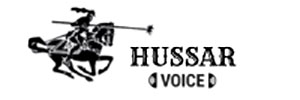 To have somebody say you “write well in an academic context” is like being called the handsome one in an ugly contest.
To have somebody say you “write well in an academic context” is like being called the handsome one in an ugly contest.
Academic writing has a bad reputation – a reputation it usually earns. Academic prose is dense, dry, formulaic, habitually bloated and often pretentious. By straining to look intelligent, the worst of it just looks silly.
This is not to say that intellectually-stimulating, life-changing writing doesn’t appear in academic journals. But for every eye-opening article, there are a dozen that could make a person stupider – if anybody bothered to read them.
The latest proof that ‘academic’ does not mean “intellectual’ appeared in the online magazine Areo.
There, three writers – Helen Pluckrose, James A. Lindsay and Peter Boghossian – admitted they had seven fake academic papers accepted for publication in seven leading social science journals. The subjects matter ranged from the ridiculous – they argue in one paper that feminist astrology should be incorporated in the sexist science of astronomy – to the absurd – they make the case in another paper that white male college students should be forced to sit on the floor in class to “experience reparations” for slavery.
The writers had more articles in the academic pipeline, but they had to call off the project after the Wall Street Journal reported on a ludicrous article the trio had published in Gender, Place & Culture: A Journal of Feminist Geography. That article argued that, to eliminate rape culture among humans, we should train men like we train dogs.
The writers at Areo wrote these inane articles to expose the sophistry that inhabits so many corners of academia. “The biggest difference between us and the scholarship we are studying by emulation,” they write, “is that we know we made things up.”
The Areo experiment replicates an experiment conducted in 1996 by the mathematician Alan Sokal. Sokal wanted to see if Social Text, a leading culture studies journal at the time, would publish a nonsensical article if it radiated the postmodern sensibilities of the radical left.
Turns out they would. And they did.
Sokal’s article, titled Transgressing the Boundaries: Towards a Transformative Hermeneutics of Quantum Gravity, argued that reality is a social construct and “postmodern science” had a role to play in advancing left-wing politics. The outlandishness and unintelligibility of the paper drew mainstream attention and mockery from all quarters.
Like the Areo writers, Sokal showed that leading peer review journals in the social sciences have gutter-low standards. They don’t fact check. They don’t edit for clarity. They care nothing about meaning. In fact, they don’t even check to see if the person listed as the author exists (the Areo articles were published under pen names).
But while Sokal exposed the intellectual laziness and uselessness of one corner of the academy, he didn’t unmask the meanness and amorality among some academics with the brilliance that the folks at Areo did.
Where Sokal’s hoax is absurd, the Areo articles are downright wicked. They attack men, heterosexuality and masculinity, single out white people for abuse, condemn healthy living, and advance a morally objectionable view of reality.
Anger and nihilism. That’s what so many academic journals stand for. That’s why so many journals published Areo’s fake articles without even a cursory fact check.
Peer review journals become jokes when they publish nonsense, as Sokal proved.
But universities, the soil from which journals grow, have more to lose.
Universities lose purpose and public trust when the journal system and the authority of peer review is used to disintegrate morality, spirit, intellect and reality.
Troy Media columnist Robert Price is an assistant professor at the University of Toronto Mississauga.
The views, opinions and positions expressed by columnists and contributors are the author’s alone. They do not inherently or expressly reflect the views, opinions and/or positions of our publication.

